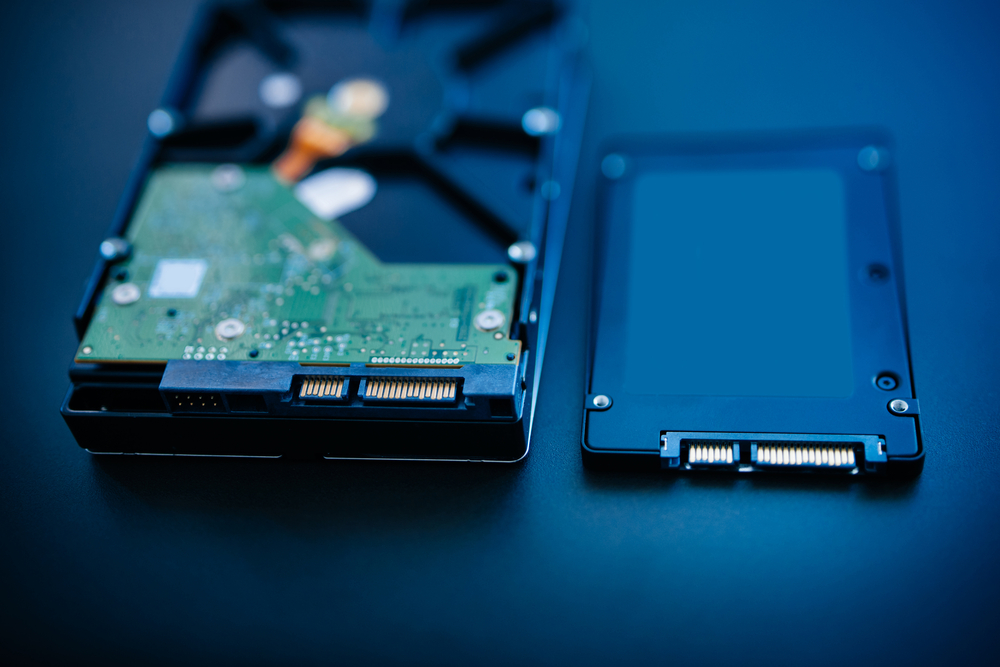SSD (Solid State drive) and HDD (hard disk drives) do very similar jobs; they store data such as applications and personal files and boot your system. However there are a number of key differences between the two. These are some of the main contrasts:
Data Storage
An SSD stores data on interconnected flash memory chips, which retain information even without a power supply. Conversely, a HDD uses magnetic storage to hold and retrieve the information using rapidly rotating platters coated with magnetic material, to be accessed and read by a read/write head. Therefore, one storage type has moving parts, and one doesn’t.
Speed
The difference in the actual operation between the two types of devices – and the fact that one has no mechanism – means that there are inevitable speed differences. The difference in the speed of reading and writing data can be as much as five times. While SSD information is accessed simultaneously, no matter where it is stored, the same cannot be said for HDD.
Digital Trends describes why this lag in speed occurs: “As long as the file being read was written sequentially, the HDD will read it quickly. However, as the disc becomes crowded with data, it’s easy for a file to be written across multiple sections. This is called “fragmenting’ and leads files taking longer to read.”
Price
PC Mag describes the divergence in prices between the two as just shy of $200 – about $40-50 for HDD, and $230 for SSD, for a 1TB internal 2.5 inch hard drive. The site says: “Since hard drives use older, more established technology, they will remain less expensive for the near future. Those extra hundreds for the SSD may push your system price over budget.” Of course if you wanted to pay for the advantages that SSD confers you might be willing to tip the budget anyway.
Noise
One has moving parts, and one doesn’t. It probably doesn’t take a lot to guess which one is quieter.
Reliability
Both have their pros and cons. Clearly, a device with moving parts will experience degradation over time, particularly if dropped or knocked over at some point. However, despite the SSD not possessing moving parts the fast read speed can eventually lead to a deterioration in the cells, eventually leading to a function failure.
Shape
Since HDDs work using a metal platter of 2.5 or 3.5 inches, there are only limited sizes that an HDD can be shrunk into. Somewhere in the structure must be a platform for this shape to be hosted. Meanwhile, an SDD is essentially a collection of memory chips, hence the constraints are far less tight. While this is largely an aesthetic concern, it might be important to you if you care about space and shape.
Many VPS website hosts are choosing SSD disks for their speed, which fits in well alongside services such as free support, high performance and strong security. Even if you have no real need to use a remote server, using these companies as an example would suggest that SSD, while expensive, might be the better bet.
If you liked this article follow us on Twitter @themerklenews and make sure to subscribe to our newsletter to receive the latest bitcoin and altcoin price analysis and the latest cryptocurrency news.

